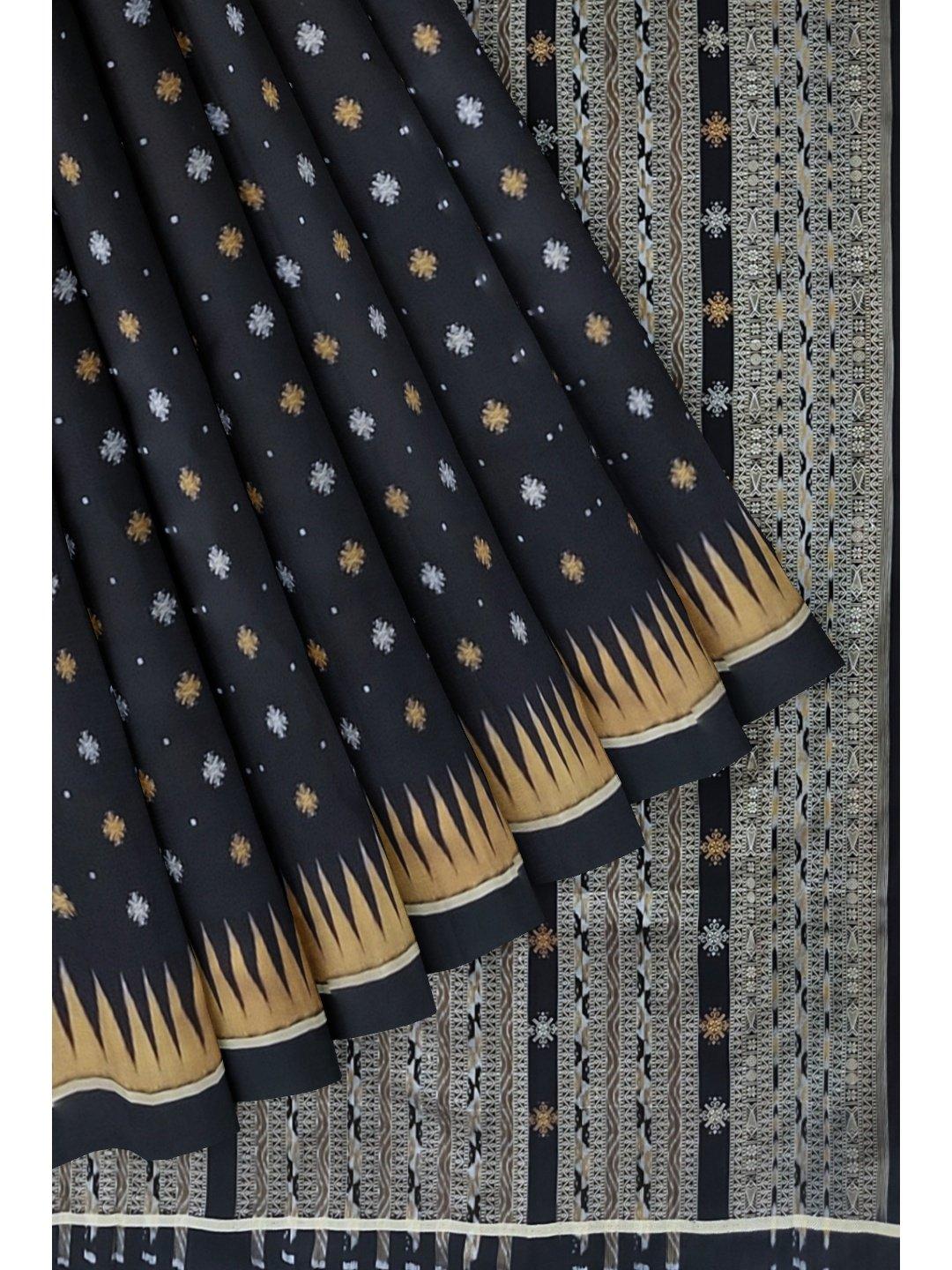Bomkai Saree
History Of Bomkai Saree
Bomkai Saree is a handloom saree from Odisha. Bomkai Saree is also known as Sonepur saree.
Sonepur is in the western part of Odisha. The Bomkai saree has originated from a small picturesque village called Bomkai in Ganjam district, 156 Km from State Capital Bhubaneswar in Odisha.
Later on, it was introduced in Sonepur. Bomkai has actually travelled all over the state and is now an being made in many other weaving clusters of Odisha.
Popular Color Of Bomkai Saree
As per historians, red and black are the colours used for weaving Bomkai sarees and this is offered to their Goddess. Weaving these sarees is time-consuming and takes nearly 10-12 days.
Bomkai Silk saree has a contrast border and pallu with beautifully woven intricate threadwork. This can be explained as an extra weft technique.
In an extra weft structure, one weft yarn is used to weave a ground cloth and an additional weft is inserted at intervals to create a decorative pattern on the surface on the cloth.
Motifs Bomkai saree
Motifs are inspired by the nature, tribal lifestyle. The saree gives an aristocrat look for its fabric, texture and smoothness. The border in most of the Bomkai pattern saree with diamond form gives the saree a prominent and distinctive look.
The motifs on the Bomkai are inspired from nature and tribal art, giving the saree a fascinating look that makes it perfect for aristocracy. Bomkai Patta sarees are available in Bomkai cotton sarees and Bomkai silk sarees fabrics.
Design Of Bomkai sarees
The saree borders are mainly with temple design and common images such as ‘earthen pots’, ‘flower designs’, ‘diamond shapes’, ‘beads’ are also added into the sari border.
The weaving technique used to form ‘Bomkai’ designs is hand-weaving and ‘silver’ or ‘gold’ cords are used. The conventional tribal designs like ‘flowers’, ‘geometric designs’, ‘fish’, ‘lotus’, ‘tortoise’, and the ‘hourglass-shaped drum’ are made use of for creating the sari ‘pallu’. As the saree takes a lot of time for its intricate work so it is expensive.
In the Bomkai Patta sari, on a bright background, the weavers create panels of contrasting motifs in the anchal or pallu. The motifs are many: karela or bitter gourd, the atasi flower, the kanthi phul or small flower, Macchi or fly, rui Macchi or carp-fish, koincha or tortoise, Padma or lotus, Mayura or peacock, and Charai or bird being some of the more common ones. Motifs are freely composed.
Motifs such as the temple border, lotus, conch and wheel signify the affinity with the reigning deity.
The Konark wheel and drawings from the Puri temple are present in almost all Odisha weaving patterns.
Bomkai Sarees Special Things
Bomkai Saree’s Pallu has a main attraction. Pallu has several contrasting colours and designs.
In most of the Bomkai sarees, the procedure used is known as Jala technique.
Traditionally, vegetable dyes were used, however, in the past few decades, weavers buy dyed yarn, which is commonly chemical dyed.
Why Odisha handloom Bomkai Saree So Popular
Bomkai Saree of Odisha handloom is treated at a very high standard among the saree lovers because of it’s softness, shine of the fabric and the motifs across the body.
Bomkai saree looks gorgeous with woven designs across the body.
Another type of Bomkai saree looks very elegant in the plain body with beautiful diamond shaped border and mesmerising pallu.
I hope now you are satisfied with the detailed description of Bomkai Saree. We have a different range and variety of Bomkai saree Price.
You can choose according to your choice.
Now you have a multiple-choice you can buy your favourite Bomkai Saree Online from your own online shop Crafts Collection



